Oil drilling in Myanmar can be traced back to the 18th century when around two hundred families in Yenangyaung in the Irrawaddy Valley were found to be “getting earth oil out of pits”. Yenangyaung or Yenan Chaung translates as “creek of stinking water” and Yenan becomes the Burmese word for oil.
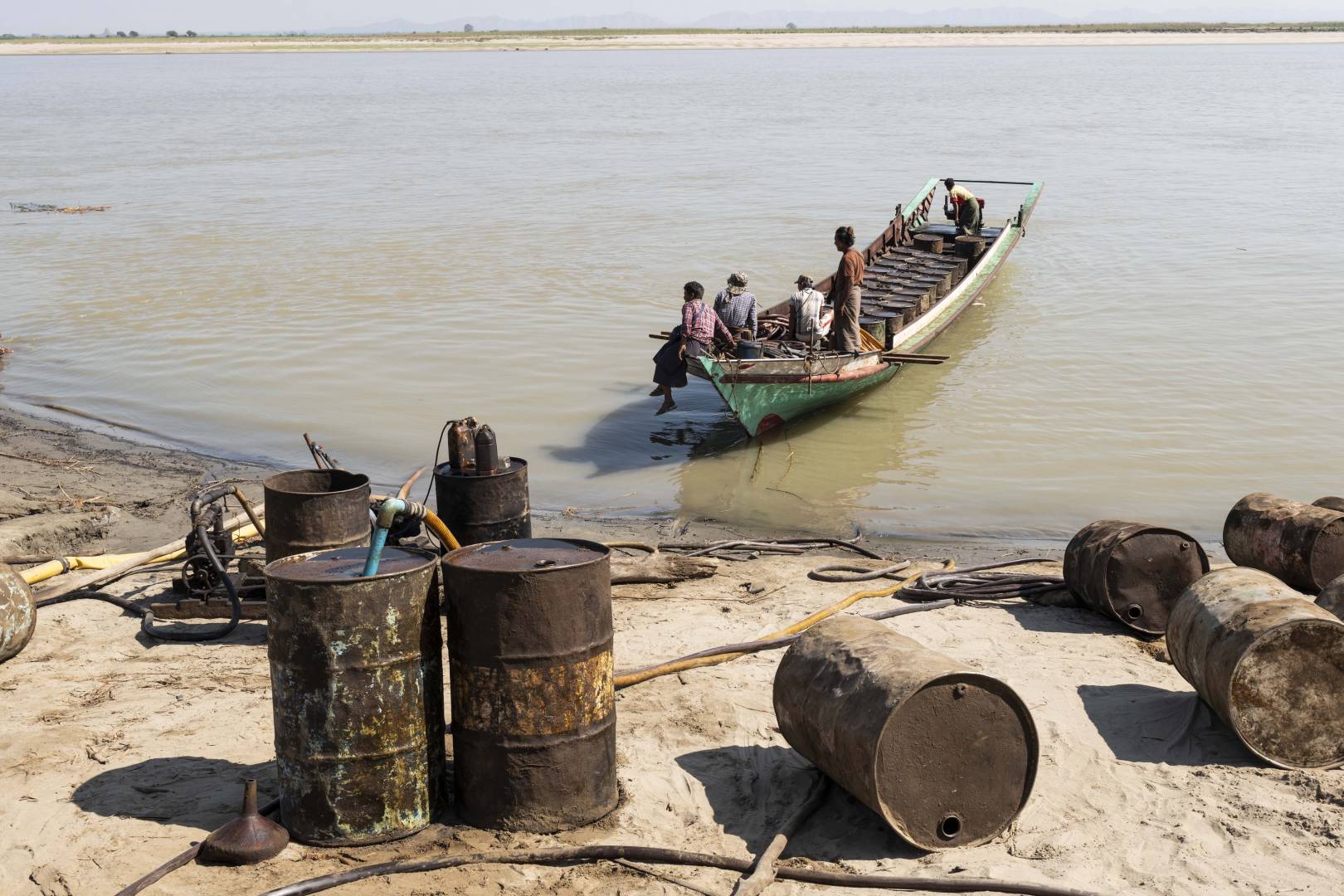
Oil drilling or exploration continued apace through to the 20th century when the Burmah Oil Company was established, the company having agreed with Britain to supply fuel oil bunkering.
At the outbreak of the second world war oil production averaged around 21,500 barrels per day, but many of the wells were destroyed to deny them to the occupying Japanese.
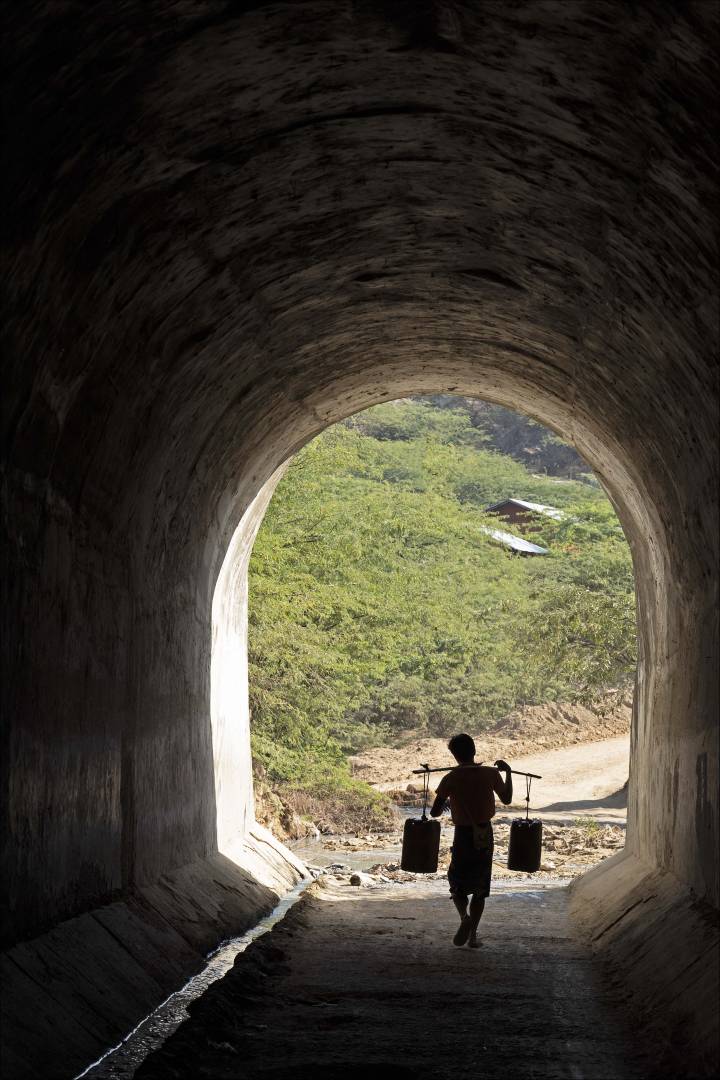
Burmah Oil
Following the war, several oil fields were reconstructed and brought back into service. And in 1963 the Burmah Oil Company was nationalised, with new fields being discovered in the Irrawaddy Valley. Production grew to a peak in the 1980s, but since then it has been in decline and many artisanal (and illegal) wells have been established by prospectors seeking riches in black gold.
Having been aware of and intrigued by the oil drilling for several years, I wasn’t able to travel to the drilling regions until, earlier this year, when travel restrictions were relaxed. As always, my trips to Myanmar are organised though Shan Yoma Travels in Yangon (formerly Rangoon) and, on this occasion, the agency’s director, Dr May, was able to arrange for a knowledgeable local guide to arrange for us to visit some wells in Magwe Division.
I made the short flight to Nyaung U where I was to use Bagan as a base for the next few days, together with Lay Naing, the local guide who arranged travel into Magwe Division to some of the oil drilling sites. Lay Naing, or Lennie, was an engineer who had graduated with a masters degree from university in Kentucky. As good fortune had it, Lennie had a few weeks earlier been consulting for one of the fields in Magwe and had arranged for us to meet the owner of a refinery. The refinery was as artisanal as the wells and not to be compared to the likes of Shell or BP.
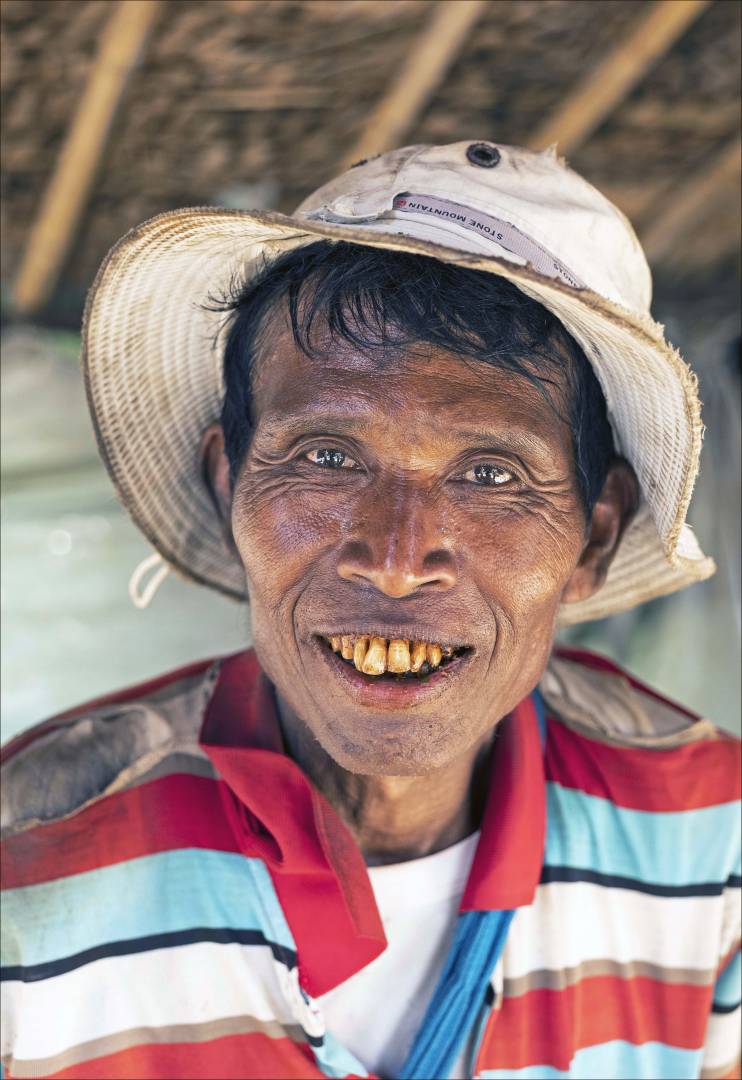
The driller 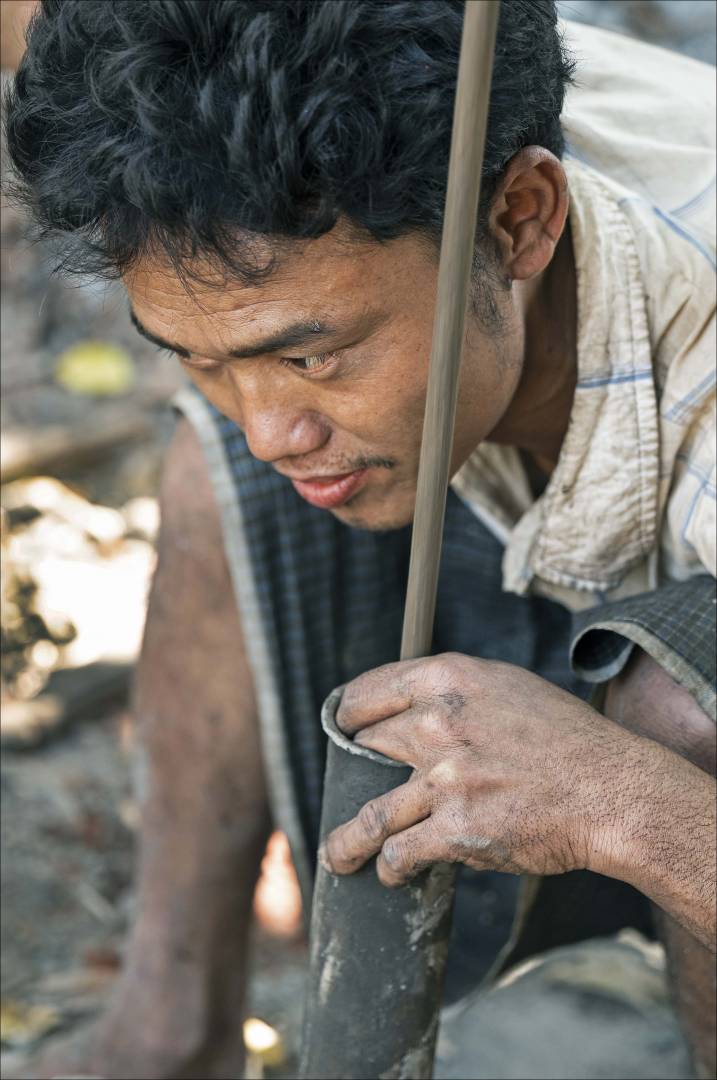
Listening and feeling for the presence of the oil
Hill of derricks
Two hours later and running out of metalled roads, we were to meet with the refinery owner who guided us on foot to the drilling area. The tented derricks were to be seen on the distant hillside with their colourful tarpaulins resplendent. Our walk took us through a tunnel under the nearby road, and we were soon approaching the drilling area. We passed many jerry cans of oil being transported on foot and by motorcycle to the nearby refinery. This was an early indication of the scant quantities of the (stinking water) that was to yield oil, later to be refined.
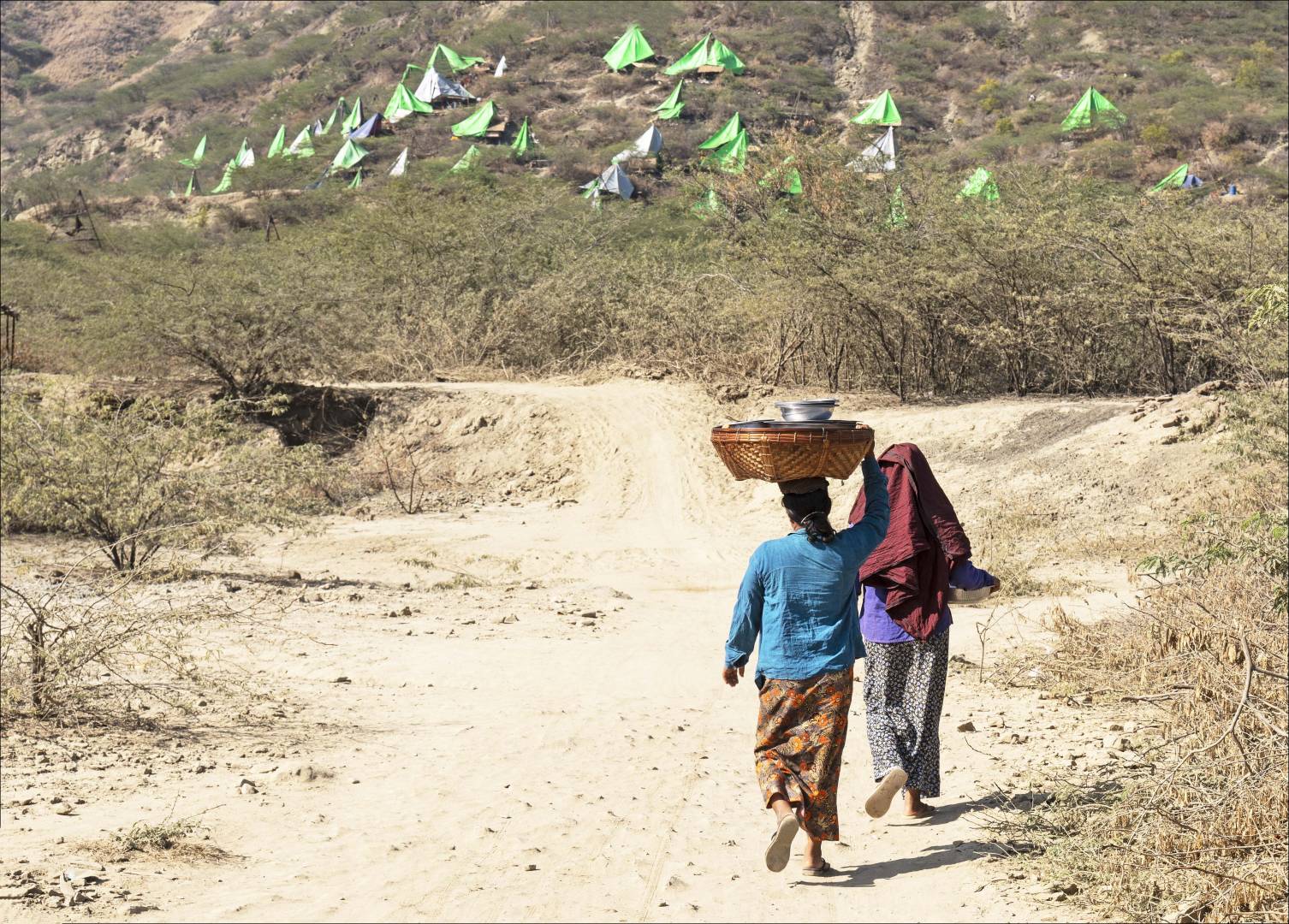
As we reached the drilling area, I estimated that there were around one hundred tented enclosures in the various stages of drilling for or drawing up the crude. The smell of the oil and muddy water mixture fills the air, along with the fumes from the Chinese generators as the drillers go about their business. This is a twenty-four-hour operation with the drillers working in shifts.
Oil is often found at depths of around 150 metres but can be up to one kilometre down, with the oil being detected by the more skilful of the drillers. They rely on both the sound and feel of the steel rope, the driller crouched over the borehole listening and lightly grasping the rope with his oily hands to detect the presence of the oil.
Evil mixture
Large bamboo structures act as both a derrick and a frame for the colourful tarpaulin that protects these hardy prospectors from the elements. Initially, a hole of approximately 50mm diameter is drilled through the various layers of mud, rock and water until the oil is reached. The bore is then lined with a plastic pipe through which the evil mixture is drawn by dropping a cylinder that is lowered by a motor-driven winch.
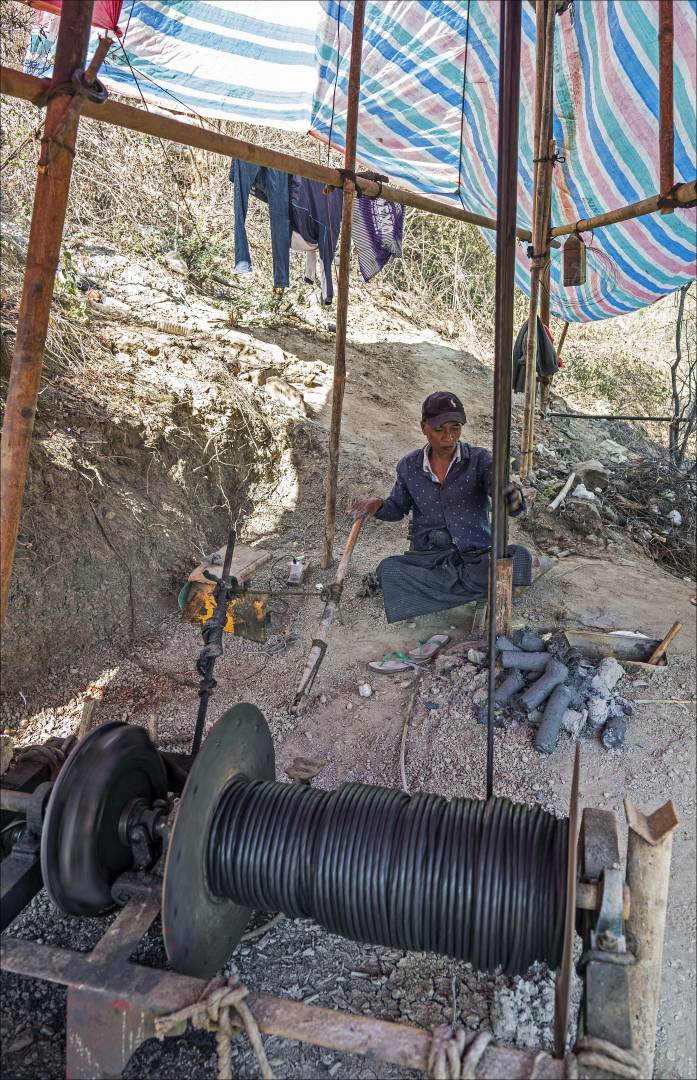
The cylinder is plugged at the bottom with mud, and the mixture enters at the top or through a hole in the side of the cylinder before being winched up. The cylinder is then carefully and skillfully unplugged, spilling its contents into a large bucket before being transferred to a jerry can.
After an hour or two witnessing this fascinating ritual and enjoying the cheerful company of the many drillers and their families it is, we were informed, lunchtime. A short walk brought us to the home of the owner of the refinery and many of the derricks where a superb lunch was offered.
The owner and his family reside in a very nearby village where the entire family met us before we tucked into a wonderful selection of curries, all freshly made for the occasion. Such is the generosity of these people, who with a meagre income, will go to any length to ensure that your visit is fruitful and that you are well looked after. This, I find, is very often the case in this wonderfully diverse country—those that have the least will give the most.
Top-notch nose bag
Following our goodbyes and, in the words of Arthur Daley, “a top-notch nose bag” we were off to the refinery. Here, a wood-fired brick oven heats the mixture until it separates the water and spirit and is channelled through a cooling trough to an awaiting oil drum. The container is then transported, often by ox cart, to the banks of the nearby Irrawaddy River where it is loaded to large longtail boats. Propelled by vast Chinese outboard motors, the boats carry the spirit to the dealers who will offer this to local filling stations where it is often mixed with petrol.
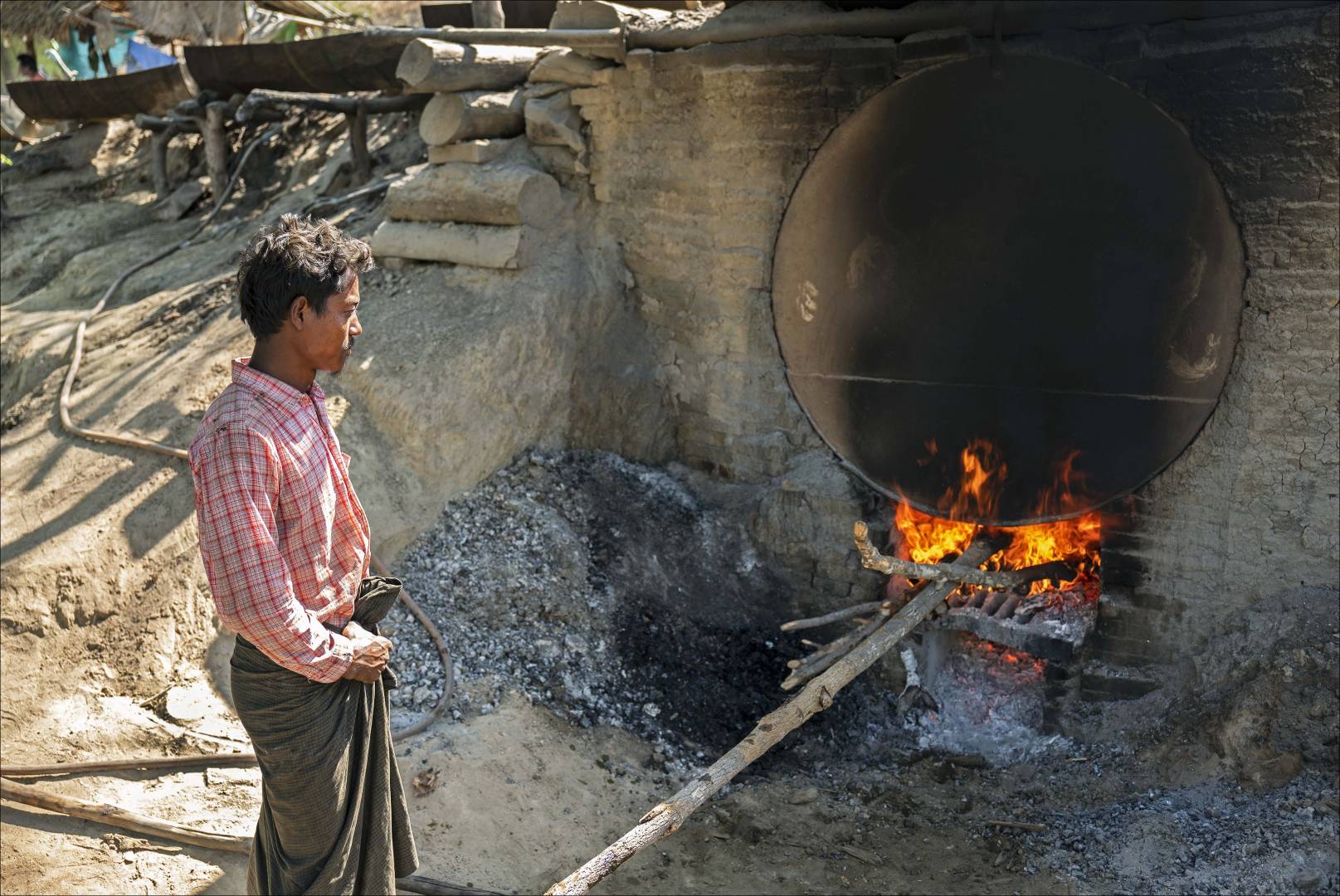
I have purposely not mentioned the names of the villages or the many people that I met as this is an illegal activity which the military junta attempt to crack down on unless they get a share—allegedly!
Then it was back to the hotel for a large one (or two) before dinner and a good night’s sleep for an early start the next morning. At seven were off again, this time in a Toyota Land Cruiser, as we were to go “off-piste” to reach the next oil field, three hours drive into Magwe Division. Once again, we were fortunate as our driver had left this remote village twenty years earlier and knew its exact location. Here he was to be greeted by his many relatives who extended their welcome to this European visitor.
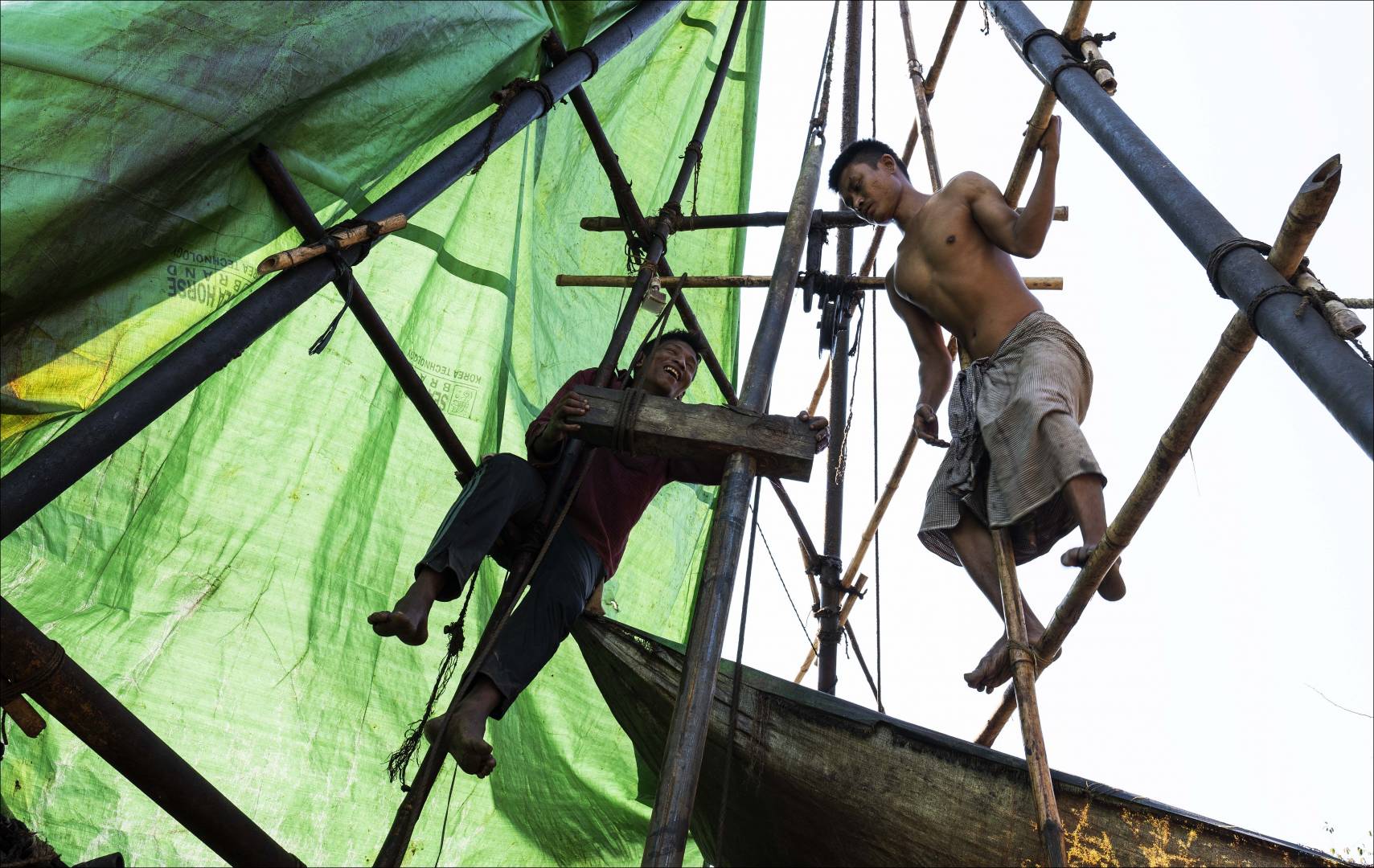
Following another superb lunch offered by the villagers we were off the drilling area.
Here the drilling was much reduced as this field had passed its best which pinnacled in 2010. But still, the field produced a few barrels a day from the many wells that are collectively worked. Such was the yield that one driller would tend to four or five derricks, each delivering as little as one barrel per day. Although the output is minimal, it still provides a better and more consistent income than the otherwise precarious pursuit of farming. Here there was another method of extracting the oil by six or seven generators and pumps connected in series and largely unattended.
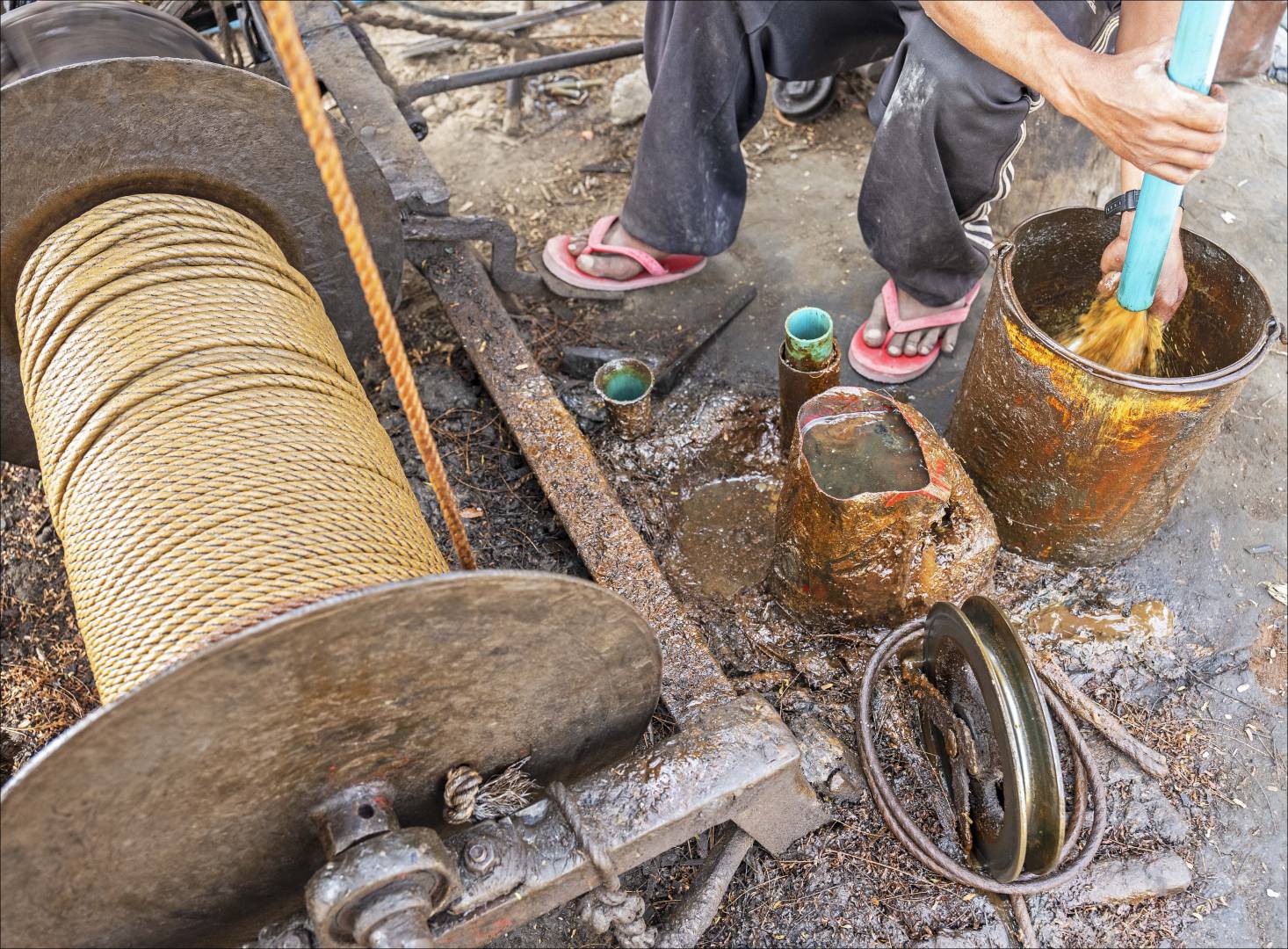
Steady decline
Our guide from the village was to explain that although the oil was now minimal, new wells were being bored with the often visiting or contract driller earning up to $150 per day for a successful well. At its peak in 2010, every well could yield up to thirty barrels a day but it has been in steady decline since.
Once we had completed our tour of the oil field, it was back to the village to reunite with our driver for the journey back to Nyang U. This was, however, not before a tour of the village where we were greeted by each household and had accrued a following of around thirty or so villagers and their offspring. Each household, in turn, offered its own hospitality from tea to homemade sweets and biscuits and to fruit and nuts. Again so much from those who have so little!
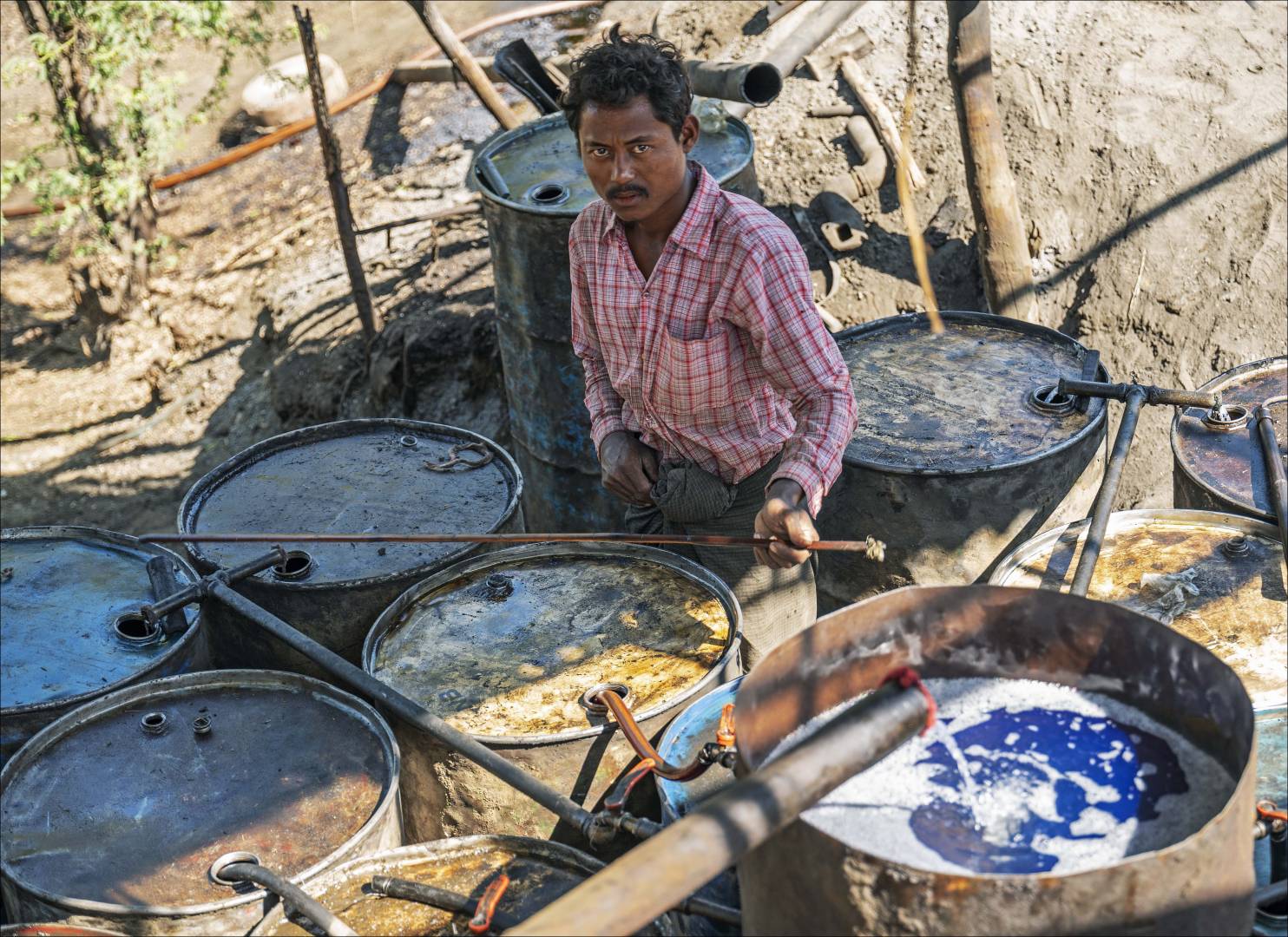
It was here that I was greeted warmly by an elderly lady with a toothless smile, who, via Lennie, explained that she was so excited as this was the first time that she had seen a European apart from, I assumed, on TV. There was a TV mast in the village and a communal television set available one or two hours a day as a generator supplied limited electricity.
I have made several visits to Myanmar since 2005 and rank it as one of my favourite countries in Southeast Asia. Each successive visit has offered more opportunities and experiences as the country transitions to democracy. Many areas are still closed to visitors, not the least of which is Rakhine State, where the problems with the Rohingya have been much publicised globally. We can but hope that ultimately that this and the many other problems besetting this jewel of Southeast Asia will be resolved as the generals are caused to release their 50-year grip on power.

Thanks Wayne and let’s hope that you will be able to travel to Myanmar in 2021. This area is well off the tourist trail as are parts of the north of the country.
Great images and text Dennis, taking us to a place that many of us will never visit.
Interesting that your travel contacts were able to arrange that itinerary for you. How often do westerners go to these remote regions – quite rarely I assume, if I’m reading your text message correctly.
We were due to visit rural north Myanmar this year, but Covid stopped that.
Thanks Jean, These images were all taken with Leica SL with 24 – 90mm.
A truly educational article. From my time in Myanmar, I remember people selling gas in bottles by the side of the road but did not know about those wells. Very nice images as well that accompany the article. Out of curiosity, which camera did you use? thanks for sharing
I found this particularly interesting because my father was with the Royal Engineers in the war and had stories of how they sabotaged the wells while retreating from the Japanese. Though his wells were near Pyin Oo Lwin (then known as Maymo).
Thank you
Tom
I was in in Pyin Oo Lwin in 2018 and was not aware of any drilling then but is possible.
Another interesting article, with such wonderful images Dennis. I could not see anywhere what camera you had taken with you.
Have a wonderful Christmas and New year. Who knows perhaps we will all manage to get out with our cameras next year.
Best
Dave
Sorry Dave, I missed this one. I used the Leica SL with 24-90mm lens, this is my main camera but I also use a CL some times.
Yes this incarceration gets a bit much but gave a goodun!
Again continuing our education by MacFilos. That seems like a cottage industry that helps the people, if government keeps their hands off. Thank you
A fascinating insight into a way of commercial life totally unknown to me. Thank you, Dennis.
They clearly didn’t mind you photographing their primitive and seemingly uneconomical industry.
No, they do not normally mind being photographed but is is good if you can make some attempt to interact.
Thank you Dennis for this most interesting and enjoyable article. Using basic methods to drill to such great depths must be a real challenge. Lovely photos as well!
Tanks Kevin, I’m pleased that you enjoyed the article and pictures.